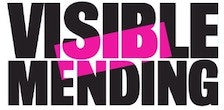BGC Craft, Art & Design Oral History Project
Kate Sekules,Mender, Mending Educator and Costume Historian
"In this interview, Sekules talks about her meditational, daily mending practice, and how she learned and developed the techniques that have become part of her mending taxonomy. She discusses terms like menditation, patchiko, endoskeleton, invisible mending, and visible mending, and breaks down where they originated from and the complicated cultural and social realities behind them. She recalls how “Make do and mend” was built into her upbringing by immigrant parents who lived through the scarcity of World War II. Sekules also speaks about her experience on the business side of fashion. Finally, she talks about the power of the needle to address social injustice.
Interview duration: 47:30 minutes
Mary Adeogun (MA): Okay. This is Mary Adeogun interviewing Kate Sekules on Thursday, April 15th at 2:30 PM Eastern time for BGC’s Craft, Art and Design Oral History Project. We are conducting this interview virtually over Zoom from our respective dwellings in New York, New York. And so Kate, I will hand it off to you to please introduce yourself. Give us your name and how you identify professionally.
Kate Sekules (KS): Hi, Mary. I'm Kate Sekules and I am a mender. I'm a mending educator, which is an informal self-administered title because mending is—as an ontology, as we say at BGC [Bard Graduate Center]—very much developing. There is no such thing as a professional mender, but there is beginning to be. And that's one thing that I'm very focused on helping into the world. So I've been mending all my life informally. And in the last few years it's been getting more and more organized. It's at the level now of certainly craft. And whether it's an art is up for debate. But I always describe the kind of mending I do, which is visible mending, as more art than Etsy. It's a kind of scrappy art form. But I'm a PhD student, as you know, at BGC. So my dissertation subject is mending. [laughs.] And I am in the process of constructing a taxonomy of mending and using that to connect a lot of dots together, so that mending becomes a subject unto itself and something worth studying in its own right and also worth collecting in the museum and also in person. I mean, personally, I feel that mends—and mostly I'm talking textile—can be valued as objects more than they currently are, which is very little, but that's also changing. That was a bit rambling, but, I'm a mender, if you want one word..."
`
Related Items
NPR 1A
Thrifting, mending, and how to be sustainably fashionable by Jenn White (host) March 23, 2023 Buying new clothes can fix us, make us more stylish,... View full details
Le Monde
L’art retrouvé du raccommodage by Catherine Rollot March 12, 2023 The article is behind a paywall (click link in title to register); otherwise, read it... View full details




















